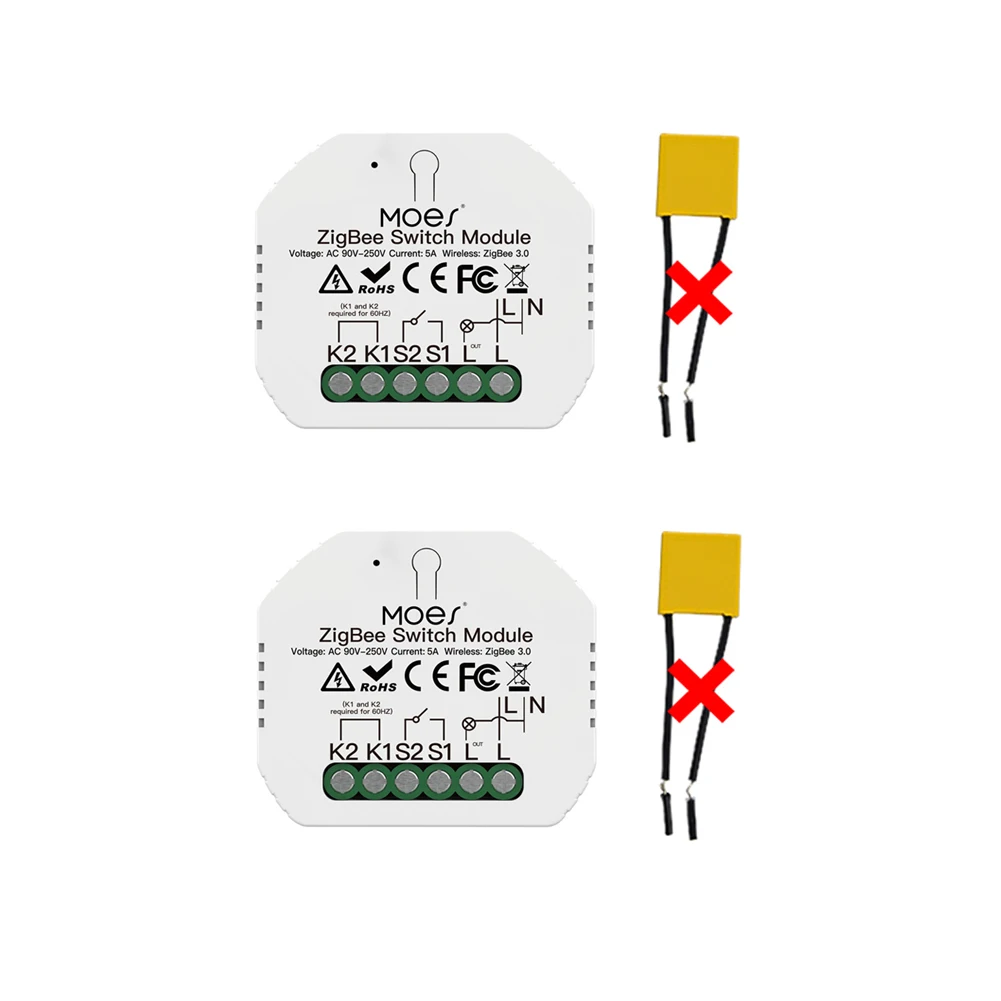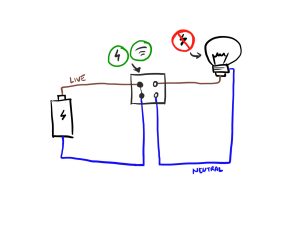

For a smart switch, toggling is done via electrical relays, which need electricity to operate.
#No neutral smart switch manual
This means that the light bulb has no electricity (which was the intention), and the switch itself is not receiving electricity.įor traditional manual switches, that’s not a problem, because toggling the switch on/off is done manually (by pressing on it). There’s an important thing to note here: when the circuit is cut by the switch, there is no electricity anymore, anywhere on the circuit. To turn off the light, it basically cuts the circuit: Light off! When you want to turn on the light, it closes the circuit like this: Light on! The switch can now control whether the circuit is open or closed, thereby controlling the light. With this in mind, we’ll now add a switch to the live (or positive) wires of the circuit. However, we have found this style of explanation the most effective to illustrate the difference between neutral and no-neutral switches to the average consumer with no electrical background. All of this is beyond the scope of this guide. There are many differences between battery DC circuits and household AC circuits, and differences between positive/negative and live/neutral. Note: this guide and these illustrations are NOT meant to be electrically accurate. While they’re technically different, the principle behind the “closed loop” concept still holds true – you need both live and neutral wires to “close the loop”, similar to positive and negative wires. Live corresponds roughly to positive, and neutral to negative. In household electricity terms, it’s also no longer called positive or negative – instead, it’s Live and Neutral. For simplicity’s sake, we’ll keep the battery in our diagrams as the power source. In a home setup, you won’t find batteries instead, the power source is at your distribution box (db). This is, essentially, how a traditional light switch works. The moment your wire comes off any of the setup – battery or bulb – the light goes off, as the circuit is now open. Diagram of a simple lighting circuit with a battery Stored electricity from the battery now flows through the wires, into the lightbulb and making it bright, and then back into the battery. This is essentially called completing the circuit, where your circuit is one closed loop.

Do the same for the negative terminal of the battery to the negative side of the bulb. Connect the positive terminal of the battery to the positive end of the light bulb with wire. In school, most of us have done little experiments using pieces of wires, a small light bulb, and a battery. Let’s start with some basics, and move on from there. Here, we attempt to break down these questions into easily understood forms. This is one of the most common questions we’ve gotten here at Homesmart.sg – what’s the difference between neutral, and no-neutral switches? Do you need a neutral wire? Should I pull neutral wires? Does your no-neutral switch flicker?


 0 kommentar(er)
0 kommentar(er)
